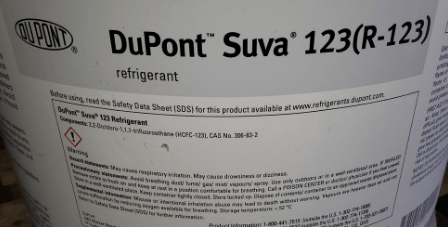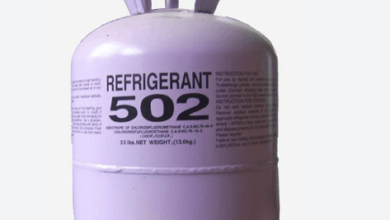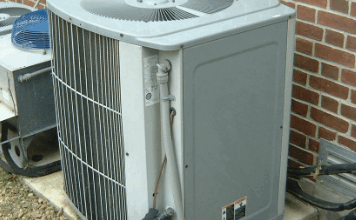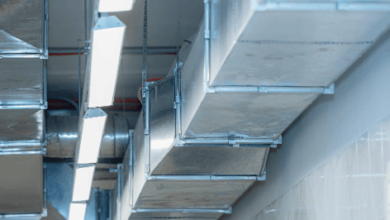123 Refrigerant – Uses and Features
In different kinds of cooling systems, we are using different kinds of refrigerant fluids. Different types of them have different standards and use according to different technologies. Here, we will summarize the general properties of the 123 Refrigerant fluid that is available in the market.
What is the 123 Refrigerant?

The 123 refrigerant is a liquid that we are generally using for the cooling applications of large buildings. The use of them is common in centrifugal chillers in large buildings. So, they re common in the air cooling systems of shopping centers and industry places in general.
But the use of the R11 refrigerant was common in these large chillers. With the passing years and developing technology, the use of the 123 refrigerants become much more common.
What are the Advantages?
There are several advantages to the 123 refrigerant applications provides. Because of this, they are generally used in different kinds of applications in general.
- They are one of the highest-efficiency refrigerants in the industry. They have very good thermodynamic properties that make them very useful for such applications. For example, their very low boiling point and high latent heat of vaporization make them very efficient in general. And they can absorb and release very high amounts of heat without any problem.
- Also 123 refrigerants are at very low risk of fire and explosion because of the very low flammability that they provide. So, you can create very safe cooling applications by using them.
- In general, copper, aluminum, and steel are the most common materials in air conditioning applications. And the refrigerant application that we use must be compatible with these materials. And 123 refrigerant is completely compatible with these materials in general.
- Also this refrigerant has very low toxicity which is not harmful to human health. Because of this, their use is very common in different kinds of applications in general. This is a very important feature that most regulations and countries are generally expecting from these systems.
Disadvantages to Consider
Also, you need to consider the different kinds of disadvantages of the 123 refrigerant if you are looking for the best application. - The most important disadvantage that we need to consider is the ozone depletion problem that they provide in general. The chlorine atoms in their structure combine with ozone in the atmosphere, and this can cause global warming in the long run. So, with the regulations of the different countries, the use of refrigerants that have ozone depletion potential is restricted.
- In terms of the costs, this refrigerant is one o the highest cost because of the advantages that it provides that we stated above.
What are the Alternatives?
Maybe you are looking at the different alternatives right now according to the disadvantages that they are providing.
You can consider these alternatives if you are looking for a non-ozone-depleting refrigerant;
- Hydrofluorocarbons (HFCs) do not contain chlorine atoms that react with the ozone material which makes this refrigerant useful in countries that have strict regulations.
- Hydrocarbons are also another class of refrigerants that you can consider.
- Directly use of carbon dioxide as a refrigerant can solve the problem of ozone depletion also.
Also, if you find the price of 123 refrigerant high, you can consider the following refrigerant materials; - Hydrocarbons: Like the low ozone depletion, you can consider hydrocarbons also. They are lower in price if we compare them with 123 refrigerants in general.
- Carbon dioxide: We do not see carbon dioxide as direct use in professional cooling applications. But in terms of the price, they are very promising.
- Ammonia: If you are looking for a cheaper application, you can consider ammonia.
What are the General Prices?
It is very hard to say strict prices for the 123 refrigerant applications. Because several factors affect the prices such as location, country, and availability. But if we take a look at the United States, they are generally expensive applications that we need to consider in general.
Even you can have small quantities of 123 refrigerant applications for around $100 which can make you consider the lower-price applications.
General Applications of 123 Refrigerant
In general, the use of the 123 refrigerant is common in large and professional cooling applications. These are the general applications; - Industrial cooling applications: In industrial cooling applications, they are very common.
- Data center cooling: Large data centers generally require a very high capacity of cooling. And the use of the 123 refrigerant is very useful because of the low flammability and higher safety.
- Chillers: In commercial cooling applications the use of chiller systems is very common. They provide very secure cooling applications.
But you need to consider the different environmental impacts and the government regulations in general.
Additional Advantages of 123 Refrigerant
With the passing years and developing regulations and standards, they become much more strict in terms of the environmental aspects. Ozono depletion topic in the HVAC systems become more and more common. And new refrigerant systems are designed to reduce Ozone depletion. One of these refrigerants is this one.
In the US, it has OEM acceptable that you can easily replace the R11 without any hesitation. But you need to be aware about you may need some replacements of seals, gaskets, and other system parts if you want to make this replacement.
Th ASREA safety running for the 123 refrigerant is B1 which means, a lower level of exposure is allowed.
Last Words
These are the general points that we can state about the 123 refrigerant. There are different kinds of sellers from that you can get quotes for the procurement. And changing them with the old systems will be much more efficient and more eco-friendly.
If you have additional questions about the 123 refrigerants, leave them below.
Also, you can find other kinds of insightful articles and posts about HVAC and refrigerants.



